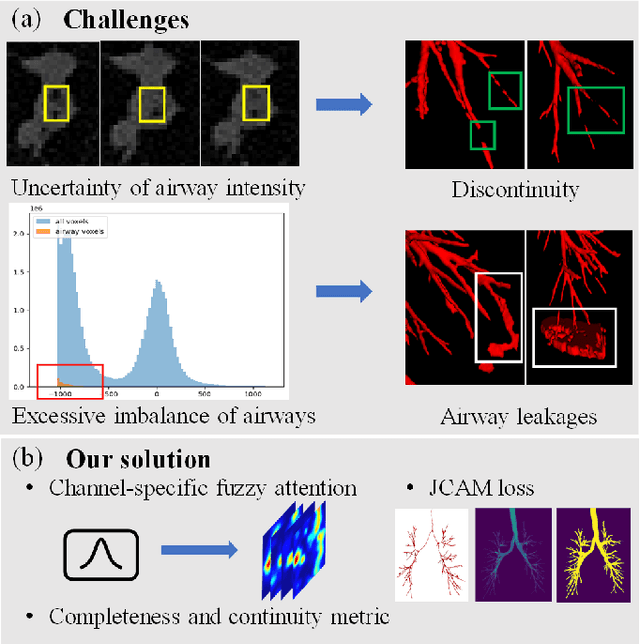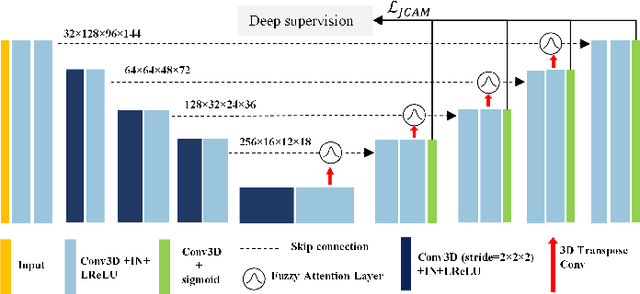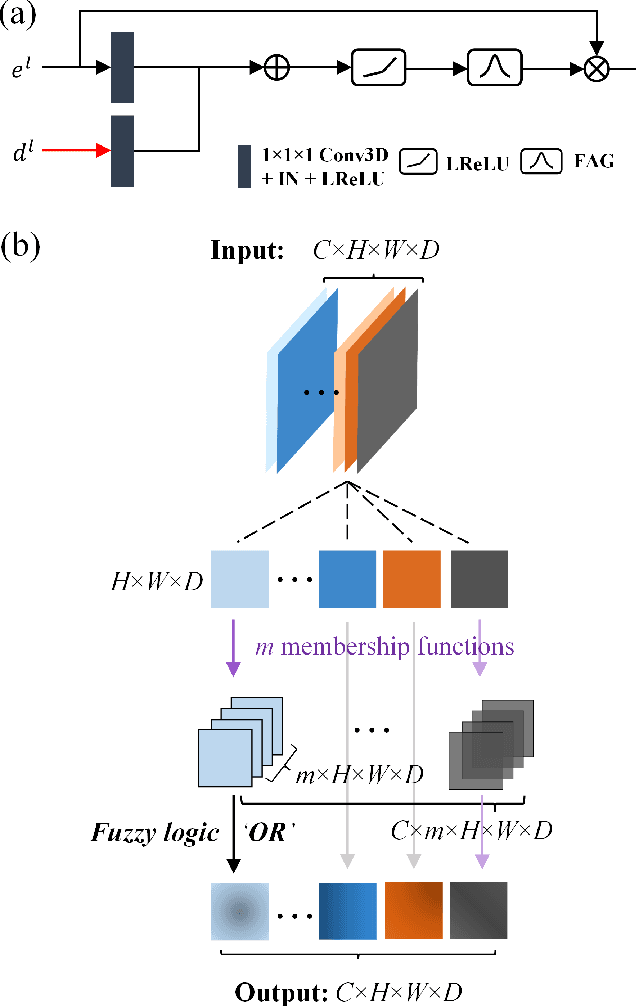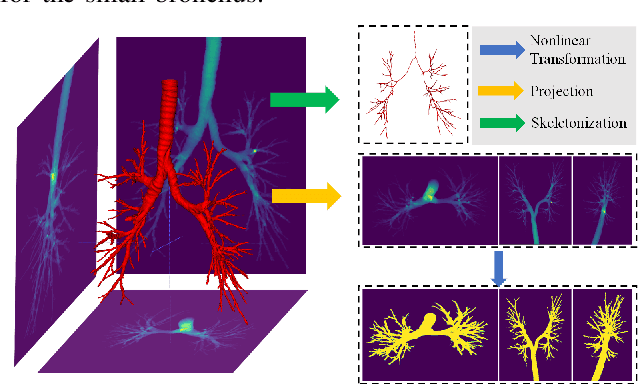Fuzzy Attention Neural Network to Tackle Discontinuity in Airway Segmentation
Paper and Code
Sep 09, 2022



Airway segmentation is crucial for the examination, diagnosis, and prognosis of lung diseases, while its manual delineation is unduly burdensome. To alleviate this time-consuming and potentially subjective manual procedure, researchers have proposed methods to automatically segment airways from computerized tomography (CT) images. However, some small-sized airway branches (e.g., bronchus and terminal bronchioles) significantly aggravate the difficulty of automatic segmentation by machine learning models. In particular, the variance of voxel values and the severe data imbalance in airway branches make the computational module prone to discontinuous and false-negative predictions. especially for cohorts with different lung diseases. Attention mechanism has shown the capacity to segment complex structures, while fuzzy logic can reduce the uncertainty in feature representations. Therefore, the integration of deep attention networks and fuzzy theory, given by the fuzzy attention layer, should be an escalated solution for better generalization and robustness. This paper presents an efficient method for airway segmentation, comprising a novel fuzzy attention neural network and a comprehensive loss function to enhance the spatial continuity of airway segmentation. The deep fuzzy set is formulated by a set of voxels in the feature map and a learnable Gaussian membership function. Different from the existing attention mechanism, the proposed channel-specific fuzzy attention addresses the issue of heterogeneous features in different channels. Furthermore, a novel evaluation metric is proposed to assess both the continuity and completeness of airway structures. The efficiency, generalization and robustness of the proposed method have been proved by training on normal lung disease while testing on datasets of lung cancer, COVID-19 and pulmonary fibrosis.
 Add to Chrome
Add to Chrome Add to Firefox
Add to Firefox Add to Edge
Add to Edge